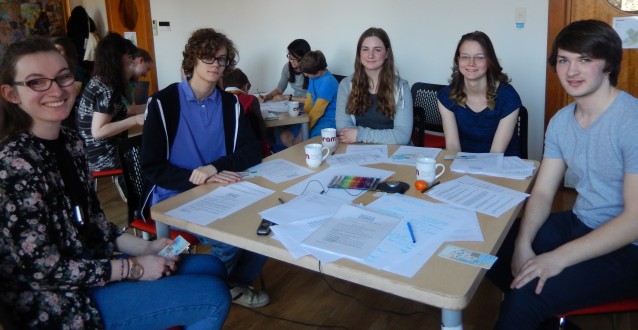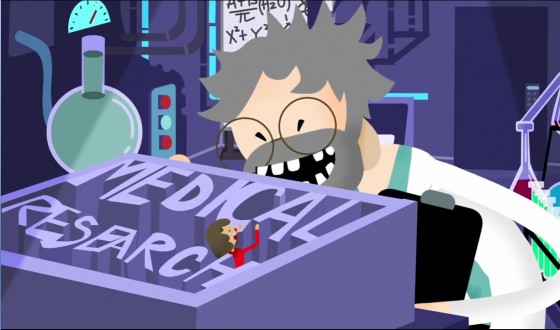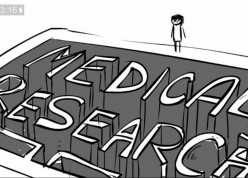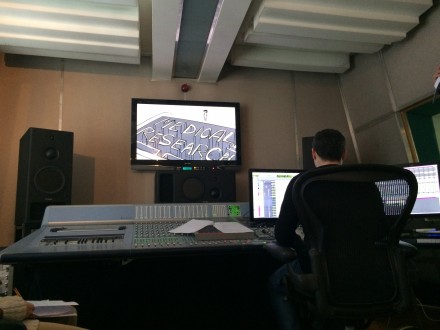Blog post
From the big tome to the small screen: animating our children and clinical research report
“Know your audience.” So say media trainers, journalists, and PR representatives the world over. Think it’s a good idea to address your audience in a way that will either bore them or exclude them? You might as well have a chat with the nearest wall (my friends often experience this when they try to talk to me about cricket).
Communicating appropriately with different audiences is something that a Nuffield Council Working Party has kept firmly in mind for the past two years, in its examination of the ethical issues of involving children and young people in clinical research. This report involved considering the perspectives of very young children, adolescents, their parents, and researchers, so communicating our work needed to be more bespoke than the usual way in which the fruits of a Nuffield Council Working Party are presented (usually a long report for those who want to explore the nitty gritty of the Working Party’s thinking, a short version for those with a little less time to read, and a one page version for members of Parliament with only five minutes to brief themselves).
For this project, however, a different approach was needed: after spending two years considering the role of children in clinical research, we had to practise what we preached. In the full report (all 200-plus pages of it), we write, “the proper involvement of children and young people in the research process, which involves at least some degree of transfer of power between adults and children… involves courage.” So, in February 2015, we courageously transferred our power to a group of young people who make up the membership of the Liverpool Young Persons’ Advisory Group (YPAG). We visited this YPAG to ask them how we could encourage a wide range of young people – including those not already engaged in thinking about clinical research through their own experience or involvement – to read and engage with our work on children and clinical research. Quite a range of ideas were suggested by the group, but two frontrunners emerged. First, for teenagers, that we should write a magazine version presented imaginatively with graphics, diagrams, and photos; and second, for a younger audience (those over ten, but without patronising older viewers) that we should produce an animation.
Tailoring material to particular audiences is something we’re familiar with. In 2008, for example, we published a shortened consultation document to support our work on the ethical issues of dementia, which had been written specifically for an audience of people with dementia. For the current project, we sought views from YPAGs in England, Scotland and the US, members of our own Stakeholder Group, and other children and young people whom we met throughout the course of our project to advise on the tone and presentation of the magazine. Although we had to take some pretty stinging criticism of our magazine drafts, these groups helped us to produce a document that is bright and, we hope, very readable.
Producing an animation, however, was a task with which we were a little less familiar.
We began by researching animation production companies with experience of producing films for fields of research allied to our own area of interest, and contracted Mosaic Films to work with us. We were assigned a production team, comprised of a producer/director, an assistant producer, and an animator.
Together with Mosaic, we set about preparing a short film that represented visually what it is to be an active young participant in research. We wanted the film to be a true reflection of the project as a whole, reflecting young people’s thoughts and ideas in an animated form, but in keeping with the main messages of the report.

To help us meet these aims, we organised a two-hour workshop one unusually sunny Saturday in March with 14 young people who had little or no knowledge of clinical research. These young people were drawn from the Council’s contacts, and included students from schools where Council staff members had previously presented our work on earlier projects. The young people’s ages ranged from ten to 18, and in small groups they were given a range of questions based on the full report, with the aim of drawing out opinions and imagery that could later be used in the animation itself. We were particularly keen on presenting the workshop participants with a series of hypothetical scenarios, and asked them to represent their reaction to these scenarios visually (all of these questions and scenarios are available in full in Appendix 5 of our report). For example, we asked “when you hear the term ‘health research’, what does it bring to mind?” The visual representations of answers to this question can be seen clearly in the first ten seconds of the finished animation, where Mia, the animation’s main character, imagines herself “as a lab rat in a maze being forced to do experiments by crazy-haired scientists.”

After the workshop, Mosaic drew together all of the visual representations the participants had offered and created a draft script to guide how the animation should be structured. We read through this script among ourselves, but realised that in order to accurately capture the ‘voice’ of young people, we needed to ask the workshop participants to help us again. So, we sent the script to them, and asked them to tell us if we’d phrased things in a way that accurately represented how young people talk; or if the script was patronising in any way to potential viewers. We had some really helpful feedback from the young people. For example, Hannah Garnett suggested that we should have more than one pro and con when Mia is making up her mind about participating in research: “For example, the negative implications may not just be about not seeing friends or the positive implications may be more than just helping others – perhaps it’s helping yourself too?” This suggestion by Hannah, and others made by further workshop participants, very much changed (and improved) the final script when compared to its draft version, and was therefore a very important part of the film’s development process.
When the script had been finalised with the help of our workshop participants, Mosaic’s animation team began designing ‘character concepts’ for each of the animation’s protagonists. Again, we had to keep in mind whether young people could relate to the characters as proposed; for example, whether they were ‘dressed’ in clothes that were sufficiently realistic.

Mosaic then produced an animatic. Until two months ago I thought that this was a member of the Scissor Sisters, but I found out that an animatic is, essentially, an outline sketch used for audio recording so that images can be matched to the script that a voiceover artist will use.
Getting the ‘right’ voiceover artist was very important to us. We wanted the voice to sound genuine, rather than like the person had been hanging around RADA too much. So, at our initial workshop, our ears were primed to find a voice that would be well suited to the aims of our film. We subsequently invited one of the workshop participants, Evie Rothwell, to be our voiceover artist for the animation. Evie had no training in voice work or acting, but one would never guess from listening to her voice in the final film. This brilliant outcome was the result of two hours of recording at an achingly cool recording studio in Soho, where Evie read through the script 12 times, expertly tweaking intonations and pauses according to the animation director’s cues. Her recording was then synchronised and overlaid to the animatic. At this point the animation really began to take shape.

After the voiceover recording, Mosaic’s animator set to work to transform the animatic with voiceover into a full colour, detailed animation. This process involved designing further characters, and appropriate backdrops to each of the scenes that would populate the final animation. The final job for our animators was to add background sounds and music to the film (viewing the animation before and after music was added was testament to how much livelier a piece can become through the addition of carefully constructed sound).
As a result of three months’ work with Mosaic, we now have an animation which we’re very proud of:
However, the work doesn’t stop there. It’s now our turn to make sure that the animation gets seen by those who will find it most useful. In particular, we hope that young people invited to take part in research will watch the animation, and will go away feeling like they matter in the context of clinical research; that they are genuine active participants in the whole process (including both young people who are ‘used to’ healthcare processes, and those who know very little/nothing about research). We also hope that the film will help researchers to take account of how they can make their research a more appealing (and potentially a less intimidating) experience, for children and young people, or how they might adapt research studies to take into account young people’s concerns.
We’ve been in touch with many relevant charities and others who are directly concerned with involving and including children and young people in clinical research, about the launch of the animation, and the report more generally. We hope that these organisations will use the animation as a resource which can be distributed widely – whether to potential young research participants, or researchers themselves.
We will also use the animation to support our own engagement work for this report, and we hope to show it to young people, parents, researchers, policy-makers and others we meet to talk about our report and the recommendations we make.
The first credit that appears at the end of the film reads: “With thanks to all the young people who helped us produce this film.” Their voice, influence, and ideas permeate the entire piece, and the animation would not be half as compelling without their contribution.
Comments (0)
Join the conversation